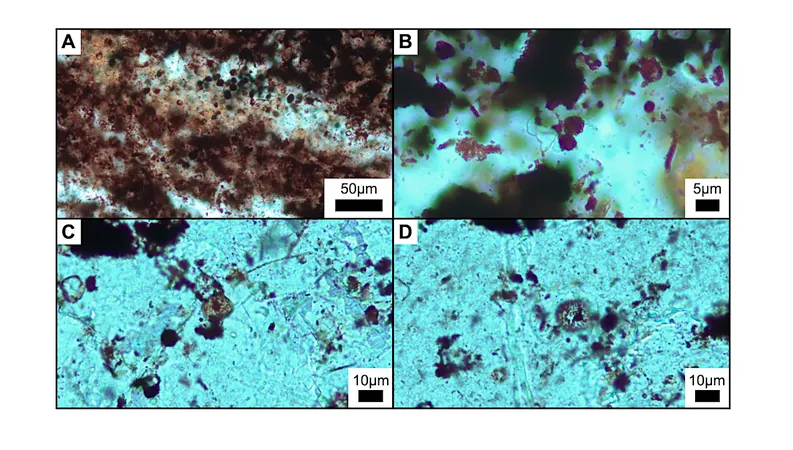
Unraveling the Mystery of the 'Alien Plant': Fossil Discovery Near Utah Ghost Town Baffles Scientists!
2024-12-19
Author: Siti
Unusual Fossil Discovery
In an intriguing twist of botanical discovery, scientists have come across an extraordinary fossil dubbed the “alien plant” near a ghost town in Utah, a find that dates back to 1969. This fossilized plant, officially named *Othniophyton elongatum*, has sparked interest not only for its peculiar characteristics but also for its unusual lineage—or lack thereof.
Research Breakthroughs
Initially, paleontologists speculated that this extinct species might share a connection with modern ginseng. However, recent research led by Steven Manchester, curator of paleobotany at the Florida Museum of Natural History, has thrown a wrench into that theory. Manchester discovered another well-preserved fossil during his visit to the University of California, Berkeley's paleobotany collection, which came from the same area as the original leaf specimens.
A New Study's Findings
Published on November 9 in the *Annals of Botany*, the new study reveals that both fossils are indeed from the same enigmatic plant species. Both specimens were unearthed from the Green River Formation in eastern Utah, which was once teeming with life surrounding a massive lake ecosystem approximately 47 million years ago, during a period rife with volcanic activity.
Significance of the Discovery
This unique environment, preserved by layers of lake sediment and volcanic ash, allowed for remarkable fossilization of the area's flora and fauna. Unlike the first findings in 1969—where only leaf samples were available—the modern discovery includes leaves, flowers, and even fruits, shedding new light on the plant's morphology. This extra detail has dismantled the former ginseng hypothesis, leading researchers to conclude that the alien plant bears no resemblance to any plant families known today, or from the fossil record.
Classification Challenges
The challenge of classifying this peculiar plant is significant. The research team meticulously examined both fossils and conducted extensive comparisons with the over 400 families of flowering plants, both extant and extinct. The outcome? They found no match. The advanced microscopy and artificial intelligence technology at the Florida Museum of Natural History played a crucial role in their analysis, revealing micro-impressions of tiny seeds and the presence of stamens—components critical for plant reproduction.
The Evolutionary Mystery
What adds to the intrigue of *Othniophyton elongatum* is the mystery of its evolutionary path, which remains completely lost to time. As researchers continue to investigate this




 Brasil (PT)
Brasil (PT)
 Canada (EN)
Canada (EN)
 Chile (ES)
Chile (ES)
 España (ES)
España (ES)
 France (FR)
France (FR)
 Hong Kong (EN)
Hong Kong (EN)
 Italia (IT)
Italia (IT)
 日本 (JA)
日本 (JA)
 Magyarország (HU)
Magyarország (HU)
 Norge (NO)
Norge (NO)
 Polska (PL)
Polska (PL)
 Schweiz (DE)
Schweiz (DE)
 Singapore (EN)
Singapore (EN)
 Sverige (SV)
Sverige (SV)
 Suomi (FI)
Suomi (FI)
 Türkiye (TR)
Türkiye (TR)